Home » Blog » Cultural Revolution of the 1920s Jazz Era
February 24, 2020
Cultural Revolution of the 1920s Jazz Era
Bootleggers and gangsters. Flappers and suffragettes. The 1920s was full of social change. When we think of the Roaring Twenties, we see images of prosperity and excitement. But the 1920s was also a period of cultural conflict of the social class and ethnicity battles. With those issues, there were also discrepancies in way of life, from the cosmopolitan to the traditionalist. A battle between old America and the new, immigration, race and alcohol as well as gender politics surfaced in profound ways. And dance and artistic expression were just two forms for those ideologies to emerge.
The Jazz Age and African Dance
Popularized in the 1920s, dance halls and clubs began to emerge in major cities in the United States. Though racial tensions were high, many individuals who frequented these establishments were actually being exposed to various African dance styles, like the Shimmy, which were actually former slave dances.
As the tempo of the music picked up, so did the pace of the dances which gave way to the Charleston and Foxtrot which we can still see portrayed on Broadway and in period productions of the time.
Not only did dance impact social constructs, but it influenced fashion greatly.
Social Change Sparks Wardrobe Alterations
When we think of “Great Gatsby” fashion, we picture the sporty look of Jordan Baker. Those short, loose dresses became the new norm, which meant corsets were a thing of the past. Women who still wore those more traditional articles of clothing would often ditch the restrictive corset at a check room before hitting the dance floor. Of course, so mom and dad never found out, they’d put them back on before heading home.
Flappers’ fashion was also huge. The iconic dress of the 1920s was flashy– not only were women saying hello to their ankles, but to their calves, too. Though not form-fitting, their straight slim cut dresses had lower necklines.
Men’s fashion also evolved and became softer and sporter–better to dance with. It also gave birth to menswear as we know it today. No matter the time of day, men were seen wearing three-piece suits.
But do not be amiss–the iconic black, pinstriped suit was a Hollywood creation rather than an actual fashion piece. Black was only worn in mourning. Most men’s suits were dark and light browns, medium blues, dark green, and greys.
So while the men and women got down to a Foxtrot in their ‘20s best– we were in the midst of the Prohibition Era, so drinking at clubs was happening, but on the down-low.
Cultural Civil-War
There was great change during the Roaring Twenties, called by historians as the cultural civil war. By far, one of the biggest changes was that of the new woman of America. While proponents of the old way of life still pushed the social matters, the new woman of America advocated gender rights, sexual expression, and freedom.
Come on, Old Sport. It’s Time to Go To River Street Jazz Cafe.
AT RIVER STREET JAZZ CAFE, WE CELEBRATE THE SOUNDS OF EVERY GENRE, BRINGING MUSICIANS, FANS, AND FRIENDS TOGETHER TO SHARE IN THE MUSIC AND THE MOMENT.
RESERVATIONS ARE HIGHLY RECOMMENDED, AS DINNER TABLES FILL UP FAST! PLEASE NOTE THOUGH, THAT HAVING A TABLE RESERVED DOES NOT MEAN YOU AUTOMATICALLY HAVE A TICKET TO ONE OF OUR SHOWS. YOU STILL NEED TO PURCHASE A TICKET SEPARATELY. CHECK OUT OUR UPCOMING SHOWS AS WELL!
WE LOOK FORWARD TO SERVING YOU AT ALL OF OUR FINE ESTABLISHMENTS:
